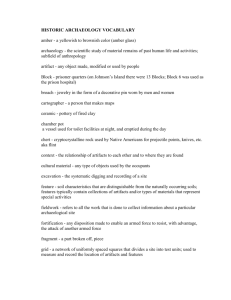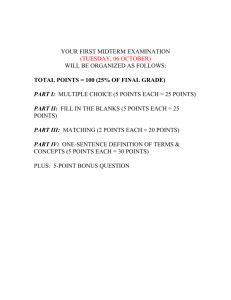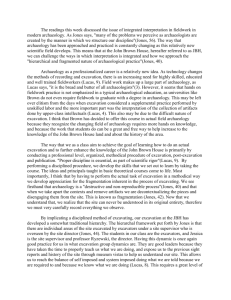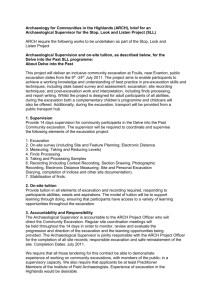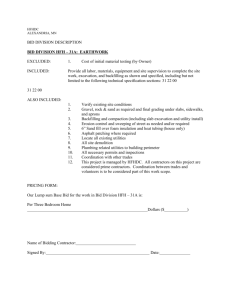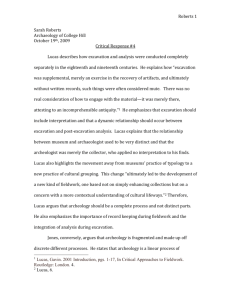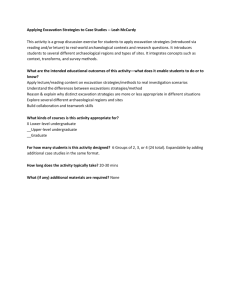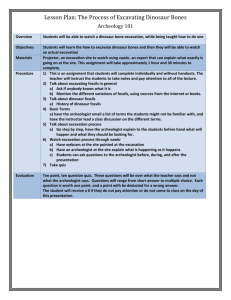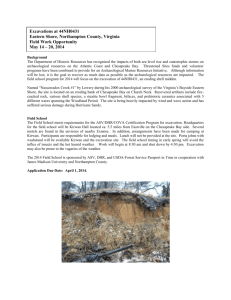Kaitlin East Critical Response 4
advertisement
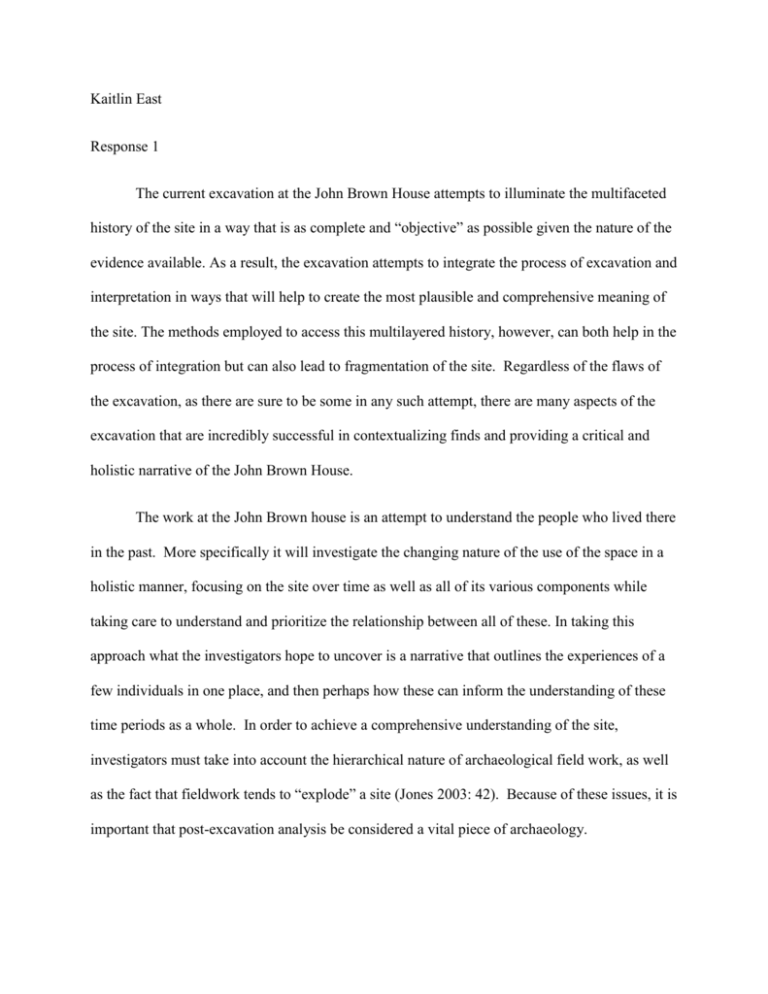
Kaitlin East Response 1 The current excavation at the John Brown House attempts to illuminate the multifaceted history of the site in a way that is as complete and “objective” as possible given the nature of the evidence available. As a result, the excavation attempts to integrate the process of excavation and interpretation in ways that will help to create the most plausible and comprehensive meaning of the site. The methods employed to access this multilayered history, however, can both help in the process of integration but can also lead to fragmentation of the site. Regardless of the flaws of the excavation, as there are sure to be some in any such attempt, there are many aspects of the excavation that are incredibly successful in contextualizing finds and providing a critical and holistic narrative of the John Brown House. The work at the John Brown house is an attempt to understand the people who lived there in the past. More specifically it will investigate the changing nature of the use of the space in a holistic manner, focusing on the site over time as well as all of its various components while taking care to understand and prioritize the relationship between all of these. In taking this approach what the investigators hope to uncover is a narrative that outlines the experiences of a few individuals in one place, and then perhaps how these can inform the understanding of these time periods as a whole. In order to achieve a comprehensive understanding of the site, investigators must take into account the hierarchical nature of archaeological field work, as well as the fact that fieldwork tends to “explode” a site (Jones 2003: 42). Because of these issues, it is important that post-excavation analysis be considered a vital piece of archaeology. The methods employed at the site involve individual units excavated by different teams with two overarching supervisors. In order to record site information, photographs, a total station, and context sheets are used. In the post-excavation process, the same individuals that are currently excavating each unit will be responsible for analyzing and interpreting the artifacts recovered. In any excavation, the archaeological site is systematically destroyed in order to investigate it. At the John Brown House, the fact that there are different individuals working at each unit further fragments the information being gleaned from the units and because the archaeologist always has a certain affect on the information that will be recovered from the site, non standard information might be recorded from each unit (Lucas 2001: 10). However, the problem of differing perspectives is largely avoided through the use of a standardized recording sheet and the constant presence of the supervisors. This also asserts that at any given time, at least the supervisors will be able to have some understanding of the relationship between units at a site, thereby leading to less fragmentation of the record as a whole. Furthermore, by retaining past excavation reports from the same area, the context of finds can be further maintained and understood. Other methods that are used to counteract the explosion of excavation are photographs and the total station as well as copious note taking. All of these things allow the excavators to retain the relationships between artifacts, units, stratigraphy etc. because they allow for a visual image of the relationship, a computerized image, and a textual representation of the relationships. Lastly, a major aspect that the excavation approaches successfully is interpretation. Jones points out that oftentimes artifacts of different classes are sent to different individuals, many of whom did not participate in the excavation itself and so have little understanding of the context of the artifacts. At the John Brown House, the individuals that will be doing the finds processing are the same individuals that were directly involved with the original context of the items, thereby ensuring that a certain amount of their original relationship are retained despite physical separation. Perhaps the only thing that could be added to increase the relationship between interpretation and excavation and thereby maintain the context of features during interpretation is to have a space on the context sheet for preliminary interpretations. The interpretations must be supported through evidence and therefore would explicate the visible relationships seen at the time of the excavation (Roskams 2001: 245). Although these interpretations may change drastically, an initial, preliminary interpretation at the site while artifacts are still in situ may provide a more holistic understanding of the site and its uses. As noted by Jones it is important to integrate interpretation and excavation in order to maintain the context of features being excavated, otherwise investigators run the risk of producing a “dislocated vision of the past”( Jones: 56). At the John Brown House we are attempting to understand the myriad ways that the site was used by a number of people over a long period of time, this of course calls for a holistic and comprehensive investigation of the archaeological site. In order to achieve this comprehensive narrative we have employed methods that allow the maintenance of context and relationship between units and artifacts through photography, text, and the total station. The inclusion of excavators in post-excavation analysis and the constant supervision of a director further promises that artifacts will not lost their context and that units will not lose their relationships. The excavation at the John Brown House, in its attempts to determine a narrative for a single parcel of land, relies on the maintenance of context and relationship, and in the methods currently employed goes a far distance in achieving those ends.

